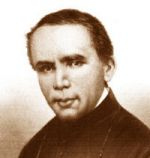Statement on Face Masks at Mass
Last spring, at the request of the American bishops, a national working group of Catholic doctors, medical scientists, theologians, liturgists, and pastors put their minds together to propose how best to celebrate Mass during the COVID-19 pandemic. They first considered the nature of the novel coronavirus and the medical challenges it presents. Then, in light of this knowledge, they explored how best to adapt the parts of the Mass in ways that would assure both safety from infection and liturgical reverence.
On 27 April the group made a thorough and detailed report available to bishops throughout the United States. Its guidelines were not mandatory; each bishop was free to adopt as few or as many of them as he wished. But many dioceses paid careful heed to the suggestions and adapted them to their local circumstances, including the Diocese of Baker. On 24 July the working group issued a follow-up report; from that document quotations in the following paragraphs are taken.
For the Centers for Disease Control (CDC) “close contact” means “being within 6 feet of a person for at least 15 minutes.” At times during Mass people come closer than 6 feet, but never for 15 minutes at a time. The reception of Holy Communion, for example, like waiting in the checkout line at Safeway or Walgreen’s, requires only a few brief moments of close proximity; and “a momentary interaction presents an acceptable risk, especially if other precautions are taken.”
One of those precautions is wearing face masks. The report recommends this practice, with a significant exception that calls for explanation. The authors point out that “the Mass is imbued with powerful sacramental and liturgical symbolism” built up over two millennia. Within this world of sacred symbols the Church enacts the full scope of Catholic aspiration; over time, faithful attendance at Sunday Mass clarifies and deepens its dramatic significance. Only from ongoing liturgical participation can a person gain an appreciation of the central importance the Mass holds for Catholics—an appreciation that people unfamiliar with Catholic life cannot share. If they happen to be government officials, our right to religious liberty reminds us, their status does not empower them to tell the Church how to conduct the worship of God. In this country the state does not “establish” a church; churches do. With responsible regard for community health and safety, it is for the Catholic Church to establish the meaning and manner of its worship without having to render an account to Caesar.
Religious freedom is in the background of the working group’s strong and clear conclusion on face-coverings: “The priest celebrant and other ministers (deacons, servers, lectors) should not wear masks . . . during the celebration of Mass” because they will be more than 6 feet from the congregation; and at such a distance “there is no substantial risk of infection.” However, as noted above, “a momentary interaction presents an acceptable risk”; therefore, the authors recommend that a priest not wear a mask for the distribution of Holy Communion during Mass.
But physical hygiene is not the only consideration. Masks at the liturgy create serious symbolic confusion as well. At Mass the priest takes the place of Jesus. Covering the face of the celebrant goes directly against the oft-repeated scriptural cry of the heart to God: “Hide not Your face from me. Show me Your face.” In view of his sacred role in the liturgy, the report observes, a masked priest “would be a detrimental counter-sign” of division and danger rather than of openness and peace.
The expert working group “carefully considered” the manner of receiving Holy Communion and concluded that “it is possible to distribute on the tongue without unreasonable risk” to those who come at the end of the line for Communion or to a separate Communion station.
In the Diocese of Baker the above-mentioned recommendations of the expert working group have informed my instructions to our priests from the re-opening of Masses in mid-May to the present.
- “Priests and extraordinary ministers may not wear masks or face coverings when distributing Holy Communion” (Decree, 11 May)
- “All ministers of Holy Communion must sanitize their hands immediately after receiving Holy Communion themselves and prior to distributing Holy Communion to the faithful” (11 May).
- “Holy Communion in the hand is strongly encouraged” (11 May), but in discussions with priests I have made it clear that reception on the tongue is not to be denied.
- “Please advise your parishioners of [Governor Brown’s order of 29 June requiring face coverings in public places] and continue our practice of encouraging them to wear masks” (Memo to priests, 30 June).
- “Those who are reluctant to [wear masks] we should treat with patience and kindness; no one should be turned away from church. As previously stated, priests are not to wear a mask while celebrating Mass” (30 June).
As is well known, people choose not to wear a mask for many reasons: psychological (memories of traumatic experiences); medical (bad physical effects); and conscientious (First Amendment). Who can tell why a face is uncovered? Woe to us if we reach the point of demanding an answer as the price of admission to the House of Prayer.
Most Reverend Liam Cary
Bishop of Baker
This item 12434 digitally provided courtesy of CatholicCulture.org






